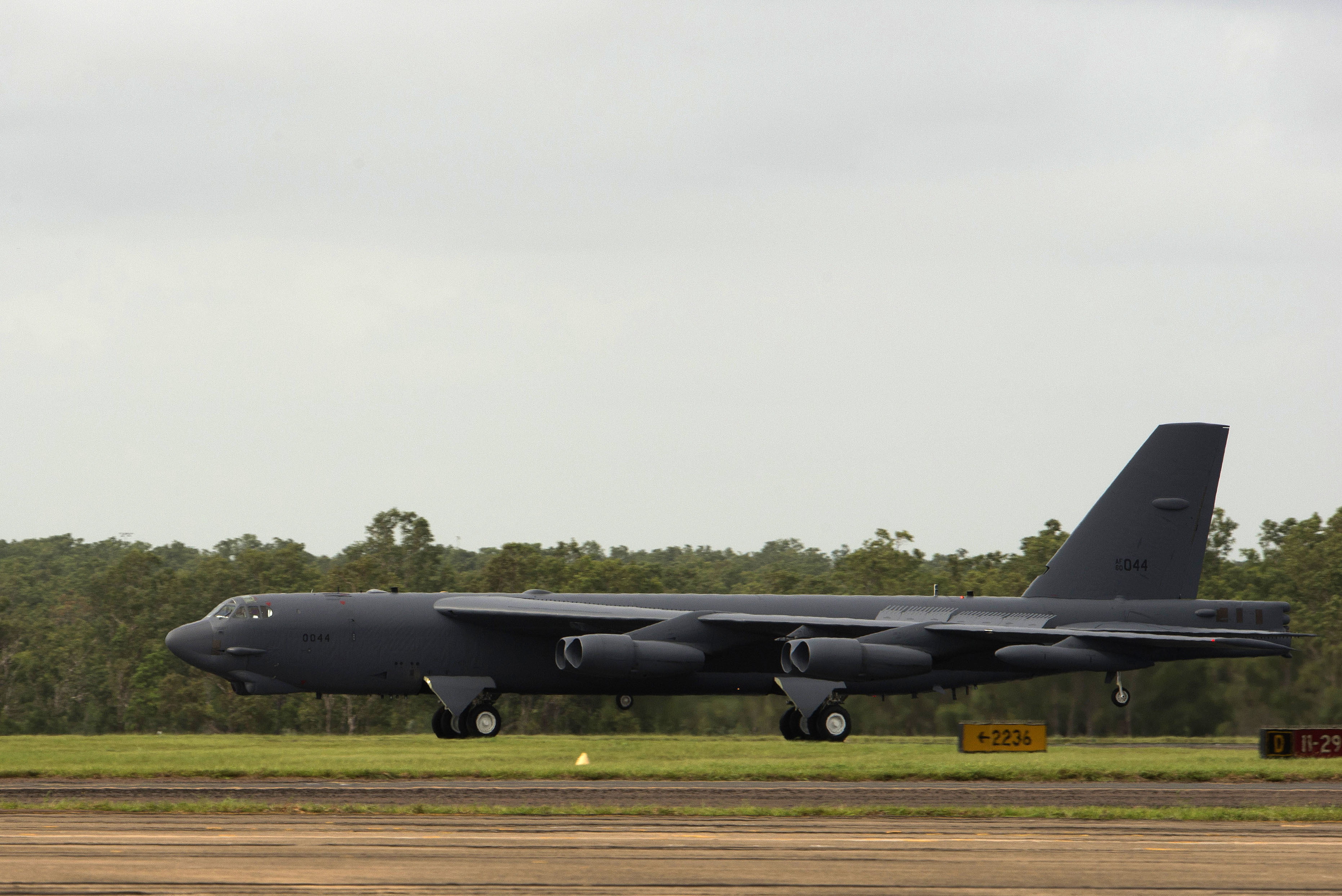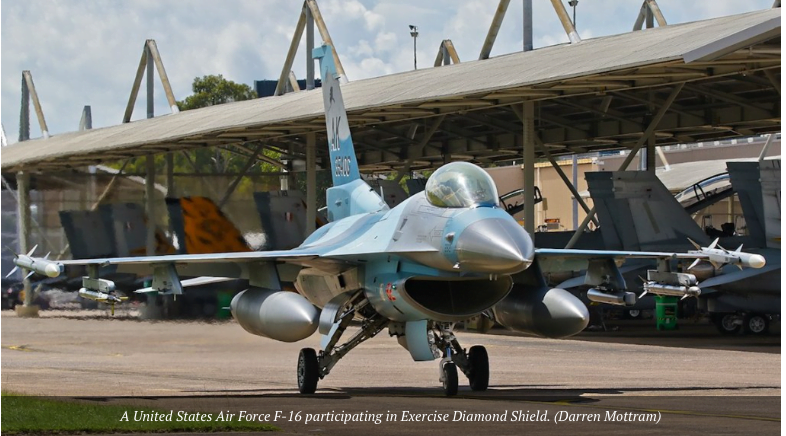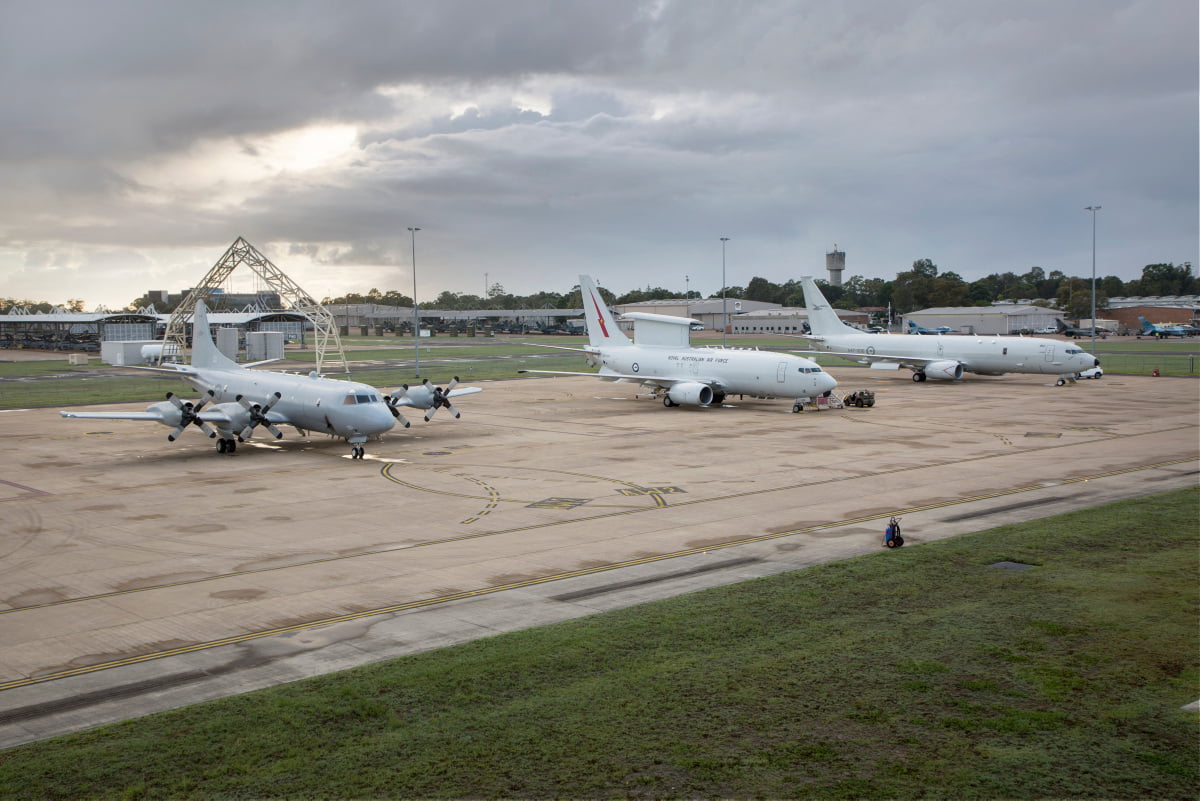The Australian Air Force conducted the second biennial Air Warfare Instructor Course in 2019 (AWIC19), a six-month course integrating warfighting functions across a range of specializations.
The second of these practical exercises, Exercise DIAMOND SHIELD (DSD19), will operate RAAF and foreign force aircraft from RAAF Base Amberley, RAAF Base Williamtown and Coffs Harbour Airport from 11-29 Mar 19.
In an article by Staff Sgt. Zade Vadnais, Pacific Air Forces Public Affairs and published on March 28, 2019, the role of the USAF 23rd EBS in the exercise was highlighted.
ROYAL AUSTRALIAN AIR FORCE BASE DARWIN, Australia —
U.S. Airmen assigned to the 5th Bomb Wing at Minot Air Force Base, North Dakota, participated in Diamond Shield 2019 at Royal Australian Air Force Base Darwin, Australia, March 18, 2019.
More than 80 Airmen and two B-52 Stratofortresses assigned to the 23rd Expeditionary Bomber Squadron and 5th Maintenance Group traveled from their deployed location at Andersen Air Force Base, Guam, to Australia’s Northern Territory to participate in the biennial exercise.
The goal of Diamond Shield is to provide training support to RAAF Air Warfare Centre students while giving U.S. and Australian Air Force members an opportunity to enhance their interoperability and effectiveness through joint training.
“What we’re doing as far as the B-52s is helping the RAAF AWC students by replicating what we call ‘Red Air,’ so we’re acting as the enemy,” said Capt. Benjamin Moer, 23rd EBS B-52 weapons systems officer. “The sorties we fly range in mission depending on what sort of threat environment the planners are trying to replicate in order for the students to get the best training out of it.”
Moer said 23rd EBS pilots operating from RAAF Base Darwin fly sorties lasting approximately 11 hours due to the installation’s relatively remote location, which functions similarly to a forward operating base during the exercise.
“We’ve got U.S. and Australian Air Force personnel scattered across the country and we’re having to communicate digitally to come up with a mission plan and then execute,” said Moer. “That’s really cool because that’s only something you really see when you’re in a deployed environment trying to work with people at different FOBs.”
The installation’s remote location also challenged 23rd EBS and 5th MXG Airmen when it came to identifying and packing the appropriate equipment for mission effectiveness.

“As far as the infrastructure we need in order to operate a B-52, we figured out how to take a little with us from Guam and borrow the rest from the RAAF here at Darwin, set up shop, and operate out of it,” said Moer. “That’s pretty amazing when you think about it. We just said ‘hey, let’s take these B-52s and operate out of Darwin for now.’ Learning what we need to bring and what we need to request [from the host base in order to be successful] is very valuable.”
Whether borrowing equipment from one another or figuring out how to fly together more effectively, the exercise allows the two nations to foster greater integration enhancing interoperability across the full spectrum of operations better preparing them to respond to future challenges in the Pacific region.
The ability to work with one another, according to Lt. Col. Daniel Willis, 23rd EBS director of operations, is the most significant takeaway from Diamond Shield.
“Ultimately the integration with the RAAF is the most important thing we get out of these exercises,” said Willis. “The more we employ together the more flexible we become, and the more flexible we are the more lethal as a team we all become.”
An article published by Australian Aviation on March 21, 2019 added further details regarding the exercise.
Conducted from RAAF Base Williamtown and RAAF Base Amberley, Exercise Diamond Shield includes aircraft and personnel from Australia and the United States.
This includes United States Air Force (USA) F-16s that are acting as aggressors in the exercise, as they did in the inaugural Exercise Diamond Shield in 2017.

USAF aircraft have arrived from its 18th Aggressor Squadron, 765th Air Refuelling Squadron and 23rd Bomber Squadron. Apart from the F-16s, other USAF aircraft include the KC-135 Air refueller and B-52, the Defence said in a statement on March 4.
Meanwhile, Defence said the RAAF had sent F/A-18A Hornet, F/A-18F Super Hornet, EA-18G Growler, Hawk 127, AP-3C Orion, P-8A Poseidon, C-17A Globemaster, KC-30A Multi Role Tanker Transport, E-7A Wedgetail and C-130J Hercules to Exercise Diamond Shield.
The featured photo shows an AP-3C Orion, E-7A Wedgetail and P8 Poseidon from Surveillance and Response Group are parked together during Exercise Diamond Shield, RAAF Williamtown NSW.


